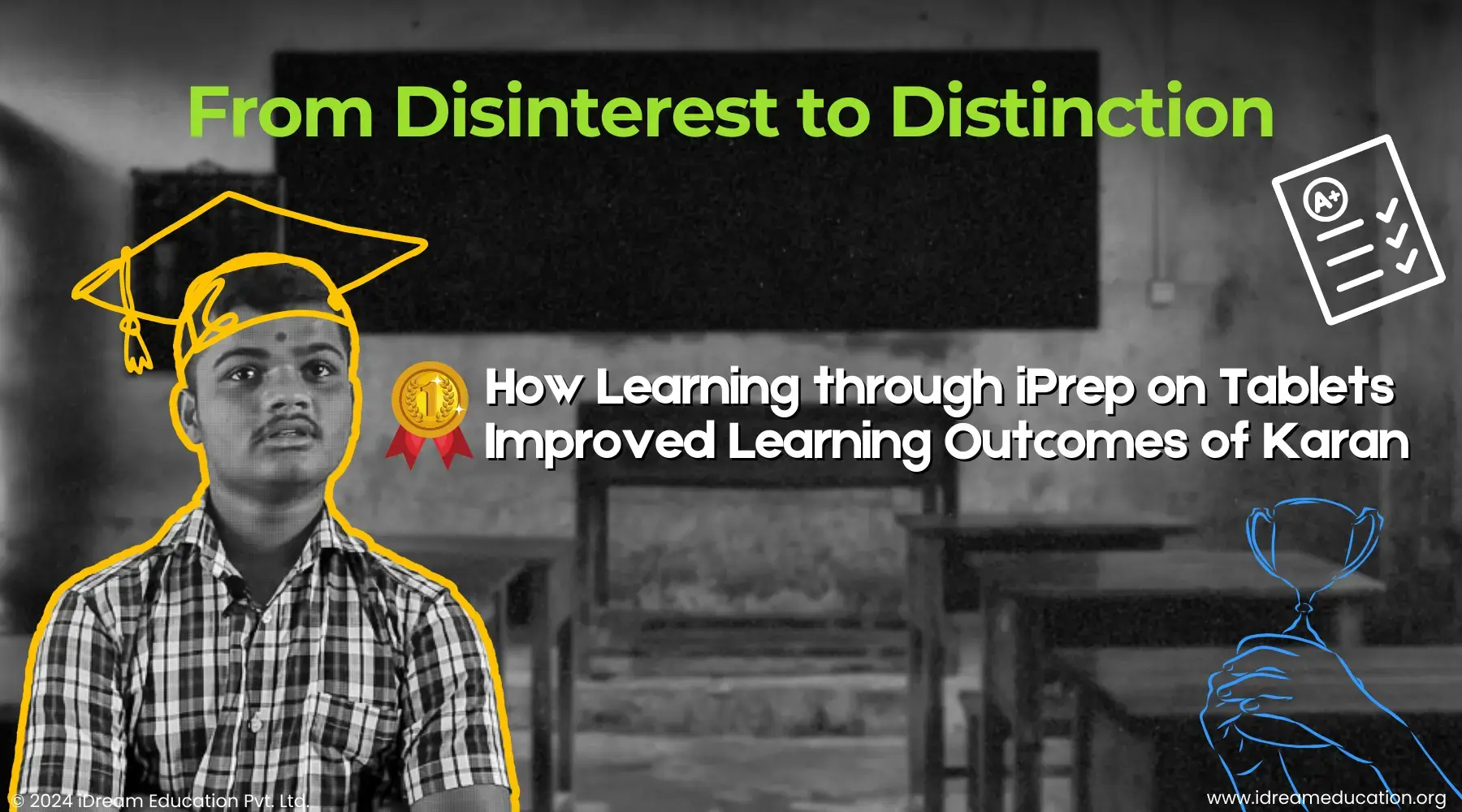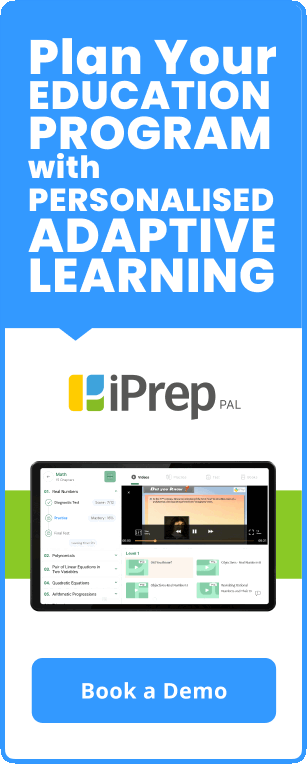Tailored Learning: Selecting the Best Personalized Adaptive Learning Software Solution
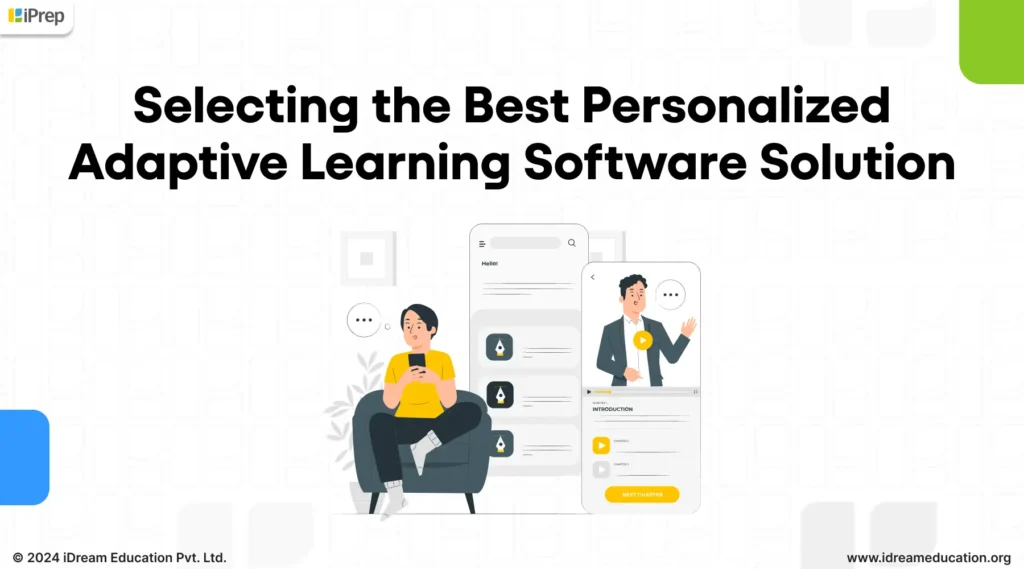
In the ever-evolving landscape of education, the concept of personalized and adaptive learning is a beacon of innovation. By tailoring instruction to the unique needs of each student, this approach has the potential to revolutionize how we educate future generations. At the heart of this transformation lies cutting-edge technology: the best personalized adaptive learning software supported by advanced algorithms and artificial intelligence.
In this blog, we explore intricacies of the best personalized adaptive learning software- its benefits, key features, and tips for selection.
What is personalized adaptive learning software?
Personalized adaptive learning software, tailors educational content and pacing to individual students’ needs, abilities, and learning styles. Through sophisticated algorithms and data analytics, this software continuously assesses student performance and dynamically adjusts instruction in real-time. By providing personalized learning paths and targeted interventions, it optimizes engagement and fosters mastery of concepts. This approach enhances learning outcomes by catering to the diverse needs of each learner in an adaptive manner.
Benefits of Personalized Adaptive Learning Software
The advantages of using personalized adaptive learning software for schools and young learners are many. Some of these are as follows:
Individualized instruction
Personalized Adaptive Learning tailors instruction to each student’s unique learning needs, preferences, and pace. This creates a learning experience tailored to individual strengths and weaknesses. This individualized approach to instruction can significantly benefit students. It can help them to recognize areas requiring improvement and tackling them within a supportive and non-judgmental setting.
Enhanced student engagement
By offering interactive and customized learning experiences, Personalized Adaptive Learning Software keeps students motivated and actively engaged in the learning process. This leads to improved retention and understanding of the material eventually resulting in academic success.
Bridging learning gaps
Personalized Adaptive Learning Software identifies and addresses learning gaps by providing targeted interventions and adaptive content. These softwares often have built-in diagnostic tools that help to identify learning gaps in students. Powerful algorithms then craft an individualized learning path for the user to ensure ultimate mastery over a concept.
Data-driven insights for educators
Educators can greatly benefit from actionable data and insights generated by Personalized Adaptive Learning Software. It enables them to track student progress, identify areas of improvement, and make informed instructional decisions.
Key Features to Look for in the Best Personalized Adaptive Learning Software
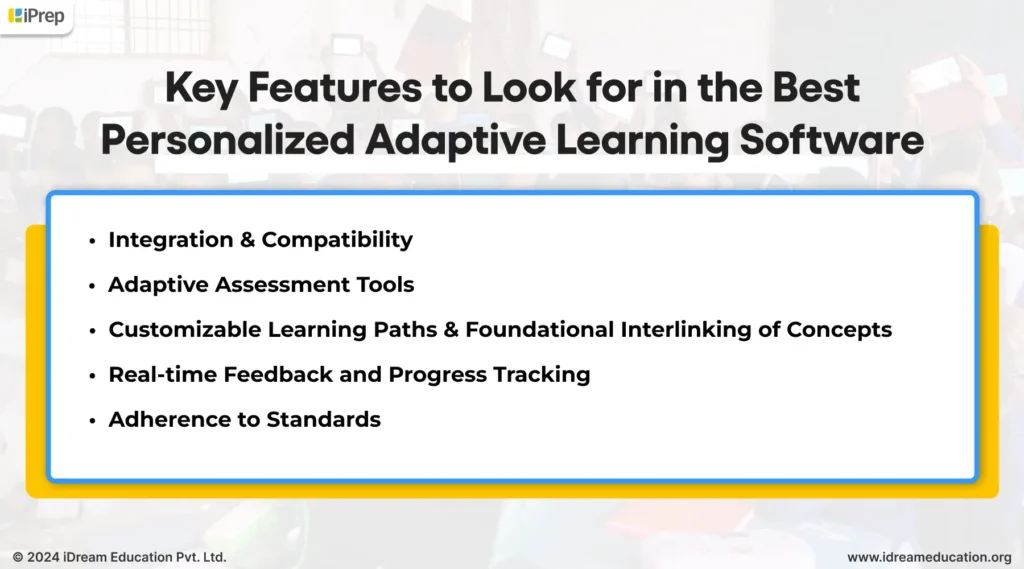
Below are some of the key features that should characterize a personalized learning software solution to tackle learning challenges effectively.
Integration and compatibility
The best Personalized Adaptive Learning Software seamlessly integrates with existing educational platforms and technology infrastructure. This ensures compatibility across devices and systems. This enables smooth implementation and streamlined workflows for educators and students alike.
Adaptive assessment tools
Advanced diagnostic tests accurately assess each student’s current knowledge level, while practice tests offer opportunities for reinforcement and skill mastery. Adaptive algorithms adjust the difficulty of questions based on individual performance, providing tailored assessments that identify strengths and areas for improvement with precision.
Customizable learning paths & Foundational interlinking of concepts
The best personalized adaptive learning software offers customizable learning paths that prioritize the foundational interlinking of concepts. For example if a learner’s understanding of a particular concept is weak, then the user is directed to a foundational content piece in an earlier chapter or a lower grade . This ensures that basic doubts are eliminated and a strong foundation for mastery is built. Also remedial content and practice tests can further reinforce conceptual understanding.
Real-time feedback and progress tracking
Effective personalized adaptive learning software also provides real-time feedback on student performance, highlighting areas of strength and areas needing improvement. Through detailed progress tracking features, educators can monitor individual and group progress over time. This helps them to identify trends, and make data-driven decisions to optimize learning outcomes.
Adherence to standards
Adherence to recognized standards is a hallmark feature of the best personalized adaptive learning software ensuring its reliability. A case in point is iDream Education’s iPrep PAL solution which is built upon the EdTech Tulna Framework. EdTech Tulna an evidence-driven evaluation index. This framework establishes a common understanding of effective educational technology, guiding the development of iPrep PAL to meet rigorous standards of quality and pedagogical soundness.
Tips for Selecting the Best Personalized Adaptive Learning Software
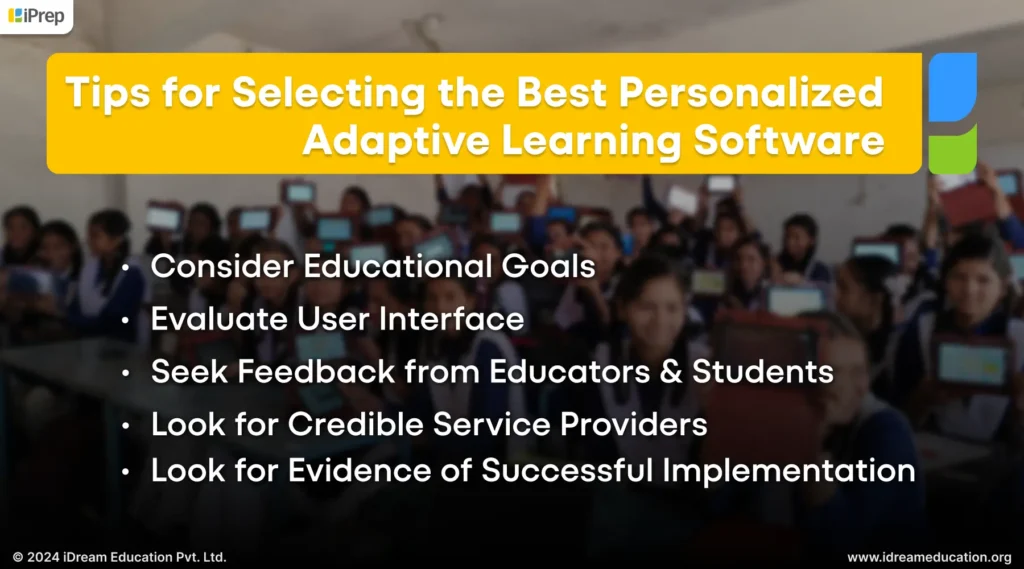
The following are some tips to effectively select the ideal personalized adaptive learning software for your needs:
Consider educational goals and objectives
Before selecting a Personalized Adaptive Learning Software, it’s crucial to align its features and capabilities with your educational goals and objectives. Whether you aim to improve student performance, enhance engagement, or bridge learning gaps, the software should support these objectives through its design and functionality.
Evaluate user interface and ease of use
The user interface of the software should be intuitive and user-friendly, facilitating seamless navigation and interaction for both educators and students. Evaluate the layout, design, and accessibility features to ensure that users can easily access and utilize the software’s tools and resources.
Seek feedback from educators and students
Gather input from educators and students who have used or experienced the software firsthand. Their insights can provide valuable perspectives on usability, effectiveness, and overall satisfaction, helping you make an informed decision based on real-world experiences.
Look for evidence-based practices and credible service providers
Choose a software provider that incorporates evidence-based practices and methodologies grounded in educational research. Verify the credibility of the provider by examining their track record, reputation, and endorsements from reputable sources.
Look for evidence of successful implementation and positive learning outcomes
Investigate case studies, testimonials, and success stories related to the software’s implementation in other educational settings. Look for evidence of positive learning outcomes, improved student engagement, and academic achievement to gauge the software’s potential impact on your institution.
iPrep PAL: Your Reliable Personalized Adaptive Learning Solution
iPrep PAL is a user-friendly and compatible personalized adaptive learning solution designed to address individual learning gaps and ensure mastery of every topic, chapter, and subject. By leveraging technology, iPrep PAL tailors education to each learner’s unique needs, analyzing their strengths and weaknesses to customize content and activities accordingly. This approach allows students to learn at their own pace and style, fostering a more effective and engaging learning experience.
How does iPrep PAL achieve this?
iPrep PAL is begins with a diagnostic test for each chapter, assessing the student’s current learning levels and abilities on the basis of their grade. Based on the results, the platform generates a personalized learning path, comprising practice questions with instant feedback and remedial video content aligned with Bloom’s taxonomy. This path not only covers the current topic but also addresses historical learning gaps by revisiting connected topics from junior classes, ensuring a holistic learning experience.
Furthermore, each chapter concludes with a final test to assess learning outcomes, with integrated reports syncing to a monitoring dashboard for easy progress tracking. Beyond the diagnostic test, the platform offers digital syllabus books, class notes, and practical videos to cater to diverse learning preferences and needs.
iPrep PAL stands out for its design based on the EdTech Tulna Framework, ensuring effectiveness through evidence-driven evaluation. Additionally, its integration with state platforms like DIKSHA ensures the seamless availability of free and credible learning resources. The centralized MIS reporting feature enables tracking and sharing of student learning data with teachers and parents.
How iPrep PAL Contributes to Bridging Historical Learning Gaps in Students and Driving Positive Learning Outcomes: An Evidence-based Exploration
The e-Adhigam project, spearheaded by the Department of School Education, Haryana Govt, is a transformative initiative aimed at equipping students in government schools with tablets designed to cultivate 21st-century skills. Among the providers selected to implement their solutions is iDream Education, offering its iPrep PAL solution for 5 subjects across government schools in Haryana. As part of this endeavor, Samsung tablets were distributed to Government School students, seamlessly integrated with the PAL solution to facilitate adaptive learning.
The PAL initiative in Haryana has yielded positive learning outcomes, addressing the significant challenge of historical learning gaps exacerbated by the COVID-19 pandemic. Implemented across more than 2000 government schools in 22 districts, with over 2 ½ lakh users in grades 11th and 12th, the initiative aims to bridge these gaps through personalized adaptive learning. Utilizing the iPrep PAL App, students access diagnostic tests, remedial content, and final tests tailored to their needs. The results are promising, with a remarkable 44% academic lift observed in subjects like Economics, Business Studies, and Geography. Additionally, the platform’s extensive usage so far, totaling over 4,35,000 hours, highlights its effectiveness in supporting students’ learning journeys.
Conclusion
In conclusion, the transformative potential of personalized adaptive learning software cannot be overstated. As educators and institutions strive to meet the diverse needs of learners in an ever-changing educational landscape, these innovative solutions emerge as invaluable allies. Choosing the best personalized adaptive learning software requires a careful analysis of the benefits and features of the solution as well as an analysis of your goals and strategies. Making a well-informed decision ensures optimal utilization of technology, leading to improved learning outcomes for learners and the attainment of overall educational objectives.






